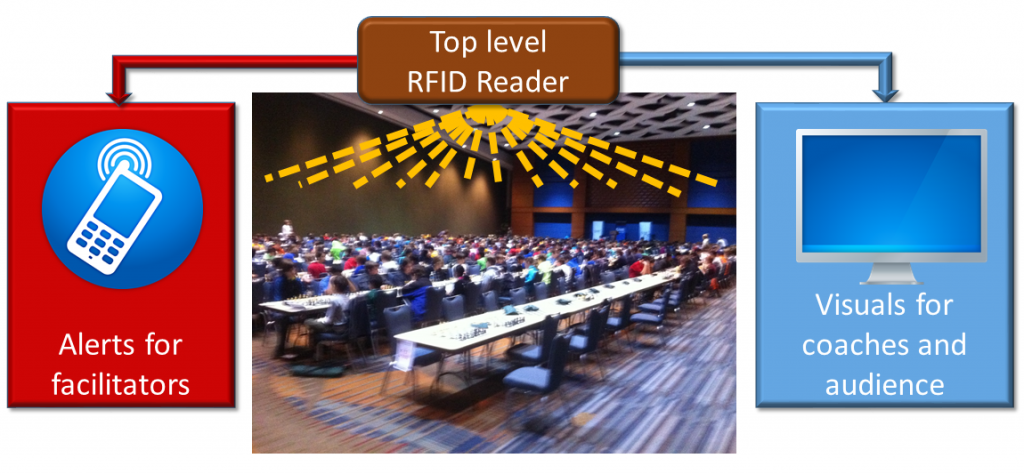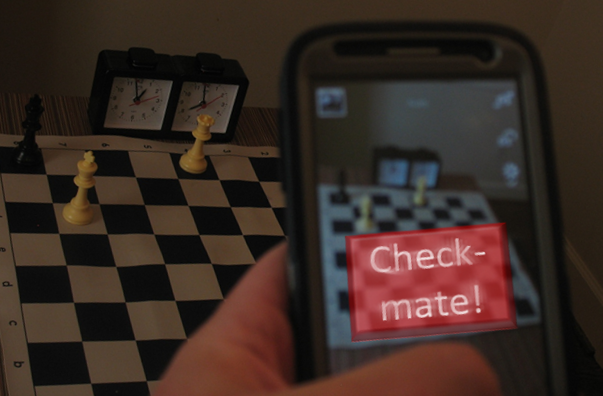Young digital natives are learning chess at an unprecedented rate. Three-year-olds learn chess from the tablet and quickly become more knowledgeable than their parents. But unlike most tablet games, chess is a gateway to Science, Technology, Engineering and Mathematics (STEM) education. We grown-ups must optimize the chess-to-STEM pipeline, but how?
Consider this scenario -- you are helping out at a local elementary school chess club. You hear a tussle at one of the boards. It’s two of the second graders. The conflict: is it checkmate? An easy question if you are an avid chess player, but what if you are not? There is so much demand for scholastic chess that there are not enough experienced chess facilitators to go around.
Could technology help? There are some possibilities, if you look out far enough, and why not consider technological innovations first? Here are some forward-looking options:
- Brain implants. Strides are being made in the area of brain signals. A chess facilitator brain implant would be wired between perception and cognition. You would just look at the board and know if it is checkmate. There are several problems with this approach. For one, this is more science than technology at this point and will remain so for decades. That's decades of kids not having chess clubs at their school. Also, it’ll be more effort for the facilitator to acquire it than to simply learn the rules of chess. Not much of an advance. Moving on…
- Internet of Things (IoT) approach. In this case, the 'things' are the chess pieces. We just need to connect them to the Internet -- a few thousand at a time in the case of a big tournament, like the record-breaking 2014 NC K-12 Chess Championship pictured here. To digitally thing-ify the chess pieces, Radio Frequency IDentification (RFID) tags can be embedded in all of them. As pieces move, the new positions are transmitted to a top-level reader that is connected to the Internet. Not only could facilitators be buzzed with smartphone alerts as games conclude, this architecture can bring tournament audiences and coaches in to the action in unprecedented ways. For example, a service like ChessStream.com can take the real-time feed and present visualizations for the coaches and audience -- potentially, a large, global audience.
 But even if RFID technology advances sufficiently and comes down in price, this plan still adds cost to a remarkably inexpensive activity. You can easily equip an entire elementary chess club with vinyl chess boards, plastic pieces and a couple analog chess clocks for less than outfitting a single athlete for some of the more costly high school sports. And once the elementary school gets that equipment, it'll last for, oh, a few hundred years. The Print + Play Chess Set brings costs even further, down to the price point of stationary -- you just print out the board and pieces on paper, cut out the pieces and assemble them. And play.
But even if RFID technology advances sufficiently and comes down in price, this plan still adds cost to a remarkably inexpensive activity. You can easily equip an entire elementary chess club with vinyl chess boards, plastic pieces and a couple analog chess clocks for less than outfitting a single athlete for some of the more costly high school sports. And once the elementary school gets that equipment, it'll last for, oh, a few hundred years. The Print + Play Chess Set brings costs even further, down to the price point of stationary -- you just print out the board and pieces on paper, cut out the pieces and assemble them. And play. - Augmented Reality (AR) approach. In such a price-sensitive environment, an Augmented Reality (AR) approach may be a winner.
 An app on a smartphone could take a picture of the position, distill it to a computerized form and then determine if it is checkmate. Facilitators can just download the app – no need for new hardware and complicated setup. The key technological challenges are in the field of computer vision, but the uniformity of piece shapes and heights should help a great deal.
An app on a smartphone could take a picture of the position, distill it to a computerized form and then determine if it is checkmate. Facilitators can just download the app – no need for new hardware and complicated setup. The key technological challenges are in the field of computer vision, but the uniformity of piece shapes and heights should help a great deal.
Bringing thousands of chess pieces online for big tournaments with RFID affords some fascinating opportunities for the sport. But at the club level, the Augmented Reality option is probably the best option in terms of cost. I just wish I knew about the computer vision part. But, unfortunately, none of these technological solutions are here today.
To solve this puzzle, we need to think less about silicon and more about old-fashion gray matter. A much more traditional approach may be best: “Fake it ‘til you make it.” You see, the two second graders in this example know enough about chess to get to the end of the game. Mostly, they just need help sorting through emotional conflict – a very human condition that requires a human touch. A simple approach to determining checkmate is just to ask them these questions:
- Is the king being attacked?
- If yes: can the king escape to an adjacent square that isn't attacked?
- If no: can you stop the attack:
- By capturing an attacking piece?
- By blocking the attack?
- If no to both: checkmate!
Scholastic chess needs more facilitators. Each new facilitator could grow the population of new young chess players by a factor of 10 or more. And each one of those new chess players will be better prepared for STEM education and the economy of the future. Just as T-ball doesn’t require the supervision of Major League Baseball players, scholastic chess facilitation can’t be left to the small group of chess masters and grandmasters. Just as you can help a child with a rainy day art project even though you don't have artwork hanging in any prestigious galleries, you can help a child solve chess puzzles even if you have never finished a game yourself.
While we wait for chess facilitation technology solutions to emerge, we need two things:
- More adults that are willing to take the plunge in to chess alongside the K-5 crowd.
- More techniques and materials from organizations like Chess Achieves that help the brave old souls willing to venture in to the land of knights and pawns.
As with any other youth activity, what could be better than seeing one of your young charges go further with chess than you could have ever dreamed of going yourself?

1 Comment
Impressed how my 4 year old enjoys playing chess whether it is on a physical board or iPad. A gateway to STEM... I hope so. 🙂